
Get the best Melasma Treatment* or Hyperpigmentation Treatment* in Delhi
Care Well Medical Centre is offering the best treatment* for Melasma/Hyperpigmentation in Delhi with a success rate of 90%* as compared to other procedures claiming success rate of as low as between 40%-50%. This is a combination of therapies which make this Melasma Treatment or Hyperpigmentation Treatment unique*.
Important sections of this page
- 1 Painful Journey of a Patient
- 1.1 Is there actually any solution to treat Melasma Pigmentation?
- 1.2 Complete Hyperpigmentation Treatment* Protocol
- 1.3 Treatment includes
- 1.4 What is Melasma Pigmentation?
- 1.5 How treatment is being done
- 1.7 Know your Doctor (Dr. Sandeep Bhasin)
- 1.7 Skin Disorders or causes of pigmentation of face mistaken as Melasma Pigmentation
Painful Journey of a Patient
A patient suffering from Melasma/Hyperpigmentation felt embarrassed. The upsetting skin condition made the person try every possible recommendation but with every failure lost hope of regaining the original skin. In search of a viable treatment the patient visits a dermatologist and was suggested to avail the treatments which includes:
- Artificial Agents
- Peels
- & other ointments
The cost of these treatments is around Rs. 3000 – Rs. 5000 per peel. The drawbacks of the above suggested treatments is that:
- Deliver Short term results
- Not very desirable results
- Only 40% - 50% success rate
With not so desirable result, the patient visits another dermatologist where the doctor prescribes almost the same medicines but of different brand. The patient yet again was made to shell out another 5k-6k in just 2 months and after receiving treatment from many different clinics, ended up with a total expenditure of Rs. 20,000+ for melasma pigmentation treatment but with absolutely no desirable results
Now, with so many disappointing treatments the patient considered Melasma as their fate and thought of living with it as it is.
Is there actually any solution to treat Melasma Pigmentation?
Yes! Surely there is. There is successful treatment available for Melasma Pigmentation and you just need to know what you are looking for.
We have brought the few best and most effective treatments for Melasma Pigmentation in India, popular worldwide. It is actually a combination of treatments with 90% success rate*. The treatment is not only effective to treat Melasma but is an overall skin rejuvenation treatment.
Highlights
- This treatment goes deep into the skin
- This treatment is a combination of therapies, facials & procedures like Mesotherapy, Lasers & Carbon Blasting
- Aim is to treat the root cause instead of just working on upper layer of the skin
- Not only just the pigmentation treatment but it is a complete skin rejuvenation therapy
- Treatment promotes growth of skin cells
Complete Hyperpigmentation Treatment* Protocol
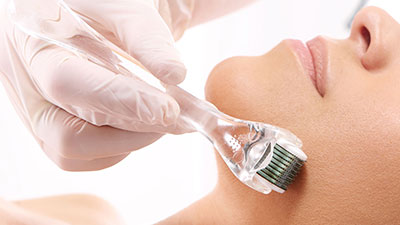
Mesotherapy
A Mesotherapy treatment involves injecting little quantities of pharmaceutical medications, vitamins, homeopathies, plant extracts... Read more
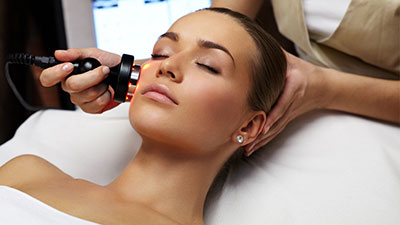
Lasers
Dermal melasma type of melasma is the most difficult to treat. A person needs a laser that can penetrate into the dermis... Read more

Medication
Dr. Sandeep Bhasin prescribe some medicines which have shown some good & desired results... Read more
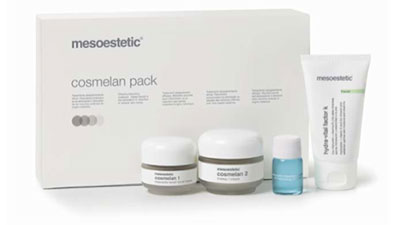
Cosmelan® Peels/ZO® Peels
Cosmelan® Peel is a medical process for treating many kinds of pigmentations of the face, neck and hands... Read more
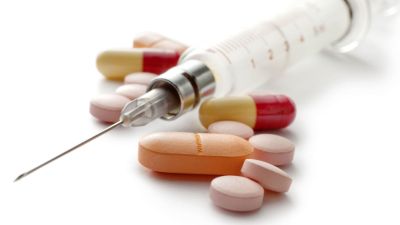
Antioxidant extracted from Plants + Vitamin C
Antioxidant extracted from Plants + Vitamnin C supplement is ideal to treat melasma, but have shown lightening effects for some people... Read more
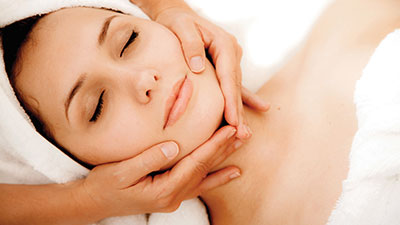
Photo Facials/Laser Toning
People, who are experiencing discolored, blotchy skin, sun-damaged, pores, freckles, or wrinkles, may benefit from an IPLTM photofacial... Read more
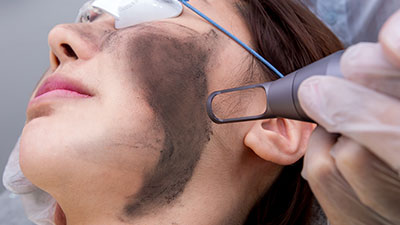
Carbon Blasting
Carbon Peel is more effective for people with oily skin, enlarged pores, blackheads, acne and dull skin on the face or body... Read more
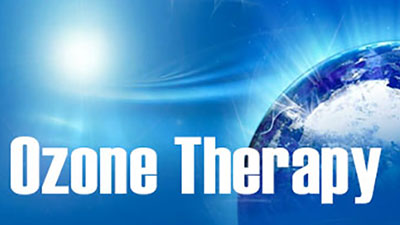
Ozone Therapy
Ozone detoxify the body and also promotes to form new and healthy tissues, cells, organs and a healthy internal body system... Read more
Treatment for Hyperpigmentation/Melasma in detail
Mesotherapy

A Mesotherapy treatment involves injecting little quantities of pharmaceutical medications, vitamins, homeopathies, plant extracts, infuse lightening, anti-aging materials and other ingredients just beneath the skin surface. This direct penetration impacts the desired area rapidly and produces noticeable results with reduced downtime.
For exacerbated pigmentation like Melasma, skin imperfections, post-inflammatory hyper-pigmentation and this technique of Mesotherapy works best to supply lightening agents such as Vitamin C and Antioxidant extracted from Plants , straight into the skin layers. Pronounced improvement can be observed in just 3-4 sessions.
Not just a treatment for melasma, but it also helps to eliminate fine lines and wrinkles, improve sun-damaged skin; and works as a classic glow treatment. Scar filling, particularly those caused by acne, can be worked upon by administering ingredients like hyaluronic acid, into the affected areas. Mesotherapy is less expensive than fillers, and one can observe substantial results in just few sessions.
Lasers

Dermal melasma type of melasma is the most difficult to treat. A person needs a laser that can penetrate into the dermis. QS-Nd:YAG lasers at low fluence is the most recommended for Dermal melasma.
Fractional laser is another very powerful laser technique that has shown the best results with melasma over a wide range of skin types and colors. This laser fragments the laser beam into smaller pixels that can offer a deeper and more effective treatment without the burning and minimum downtime.
Do remember that if you have melasma, darkening or pigmentation that is hormone linked, then do not allow your expert to use lasers on your face. Many lasers make melasma worse and it is important to consider a trusted laser treatments expert for melasma.
Medication

The mainstay for melasma treatment remains topical depigmenting agents. Medications are effective in budding phase of the disease.
Owing to a gel (form of vitamin A that helps the skin renew itself) capability to elevate the effectiveness of other therapies, combinations of gel with organic compound have been encouraged. In fact, the only topical ointment presently approved by the United States FDA for melasma treatment is a triple-combination ointment.
The use of by-product of vitamin A (You can ask name of the gel during the cosultation) can be effective as monotherapy, as use of it results in increased keratinocyte turnover and decreased melanocyte activity. They also enhance the permeability of the epidermis, allowing for better administration of add-on therapies. It is crucial to avoid this therapy to pregnant or planning to become pregnant women.
Cosmelan® Peels or ZO® Peels for Melasma

Cosmelan® Peel is a medical process for treating many kinds of pigmentations of the face, neck and hands. This peel helps in improving fairness & skin luminance. It takes less than 10 minutes to perform Cosmelan peel and patient can wash off the peel with regular water at home.
ZO 3 Peel for melasma is an exfoliating peel that supports both ZO Skin daily healthy skincare regime and ZO Medical therapeutic systems to extend and enhance their potential. ZO® Peels are created to be conducted as a series of treatments for on-going skin health restoration and replenishment. ZO 3 peel removes the outermost layers of the skin and revitalizes the deeper skin layers, and boosting the functioning of the skin cells. It aids in reducing skin burns that can be caused by peels, hormones, pollution and sun. ZO 3 peel also improves conditions of fine lines, acne, large pores, sun damage, texture roughness, and skin dullness. It is also appropriate for all skin type and tones.
Antioxidant extracted from Plants + Vitamin C

Antioxidant extracted from Plants + Vitamnin C supplement is ideal to treat melasma, but have shown lightening effects* for some people. The excellent way to notice the effects of any internal supplements though is to exfoliate and to use sunscreen.
Photo Facials/Laser Toning (Laser Toning is done to remove pigmentation)

People, who are experiencing discolored, blotchy skin, sun-damaged, pores, freckles, or wrinkles, may benefit from an IPLTM photofacial. People with naturally dark skin tone or are tanned may experience changes in skin pigmentation after Intense Pulsed Light Treatment (IPLTM) photofacial treatment.
Carbon Blasting

Carbon Peel is more effective for people with oily skin, enlarged pores, blackheads, acne and dull skin on the face or body. It is an ideal way to exfoliate and rejuvenate your skin, providing an instant rejuvenates appearance and leaving smoother, firmer and fairer skin.
A layer of liquid carbon is applied on to the skin, where it perforates deep into the pores. Laser light is immensely attracted to the carbon particles. When the laser moves over the area, it damages the carbon, taking dead skin cells, infections and oil with it. This treatment provides various benefits like reducing Acne and Oil, Cleansing, Exfoliating, and Rejuvenating.
Ozone Therapy

Ozone therapy involves ozone molecules that work great to detoxify the body by breaking down heavy metals and toxins. Ozone also promotes to form new and healthy tissues, cells, organs and a healthy internal body system. By getting Ozone, you will help your body to restore an optimal health, wellness and quality of life.
What is Melasma Pigmentation?
Melasma is a chronic skin problem that leads to consistent, blotchy, or brownish body or facial pigmentation. It can result in considerable stress. The facial form of melasma pigmentation is known as chloasma, but as this refers to green skin, the term melasma (brown skin) is used. The exact cause of melasma is complex. However, the pigmentation is known to be stimulated due to excessive formation of melanin by the pigment cells, melanocytes- which is taken up by the keratinocytes (epidermal melanosis) and/or deposited in the dermis (melanophages).
Causes of Melasma/Hyper-Pigmentation
Known stimulators for melasma include:
- Genetic predisposition to melasma, is a factor about in 1/3rd of patients reporting other family members to be affected
- Hormonal irregularity treatments- oral contraceptive pills containing progesterone, and/or oestrogen, intrauterine devices, implants and hormone replacement, reporting quarter of women to be affected.
- Pregnancy, the pigment usually become pale a few months after delivery
- Sun damage and exposure causes activation of the melanocytes to produce more melanin, deposition of pigment within the dermis which often persists long term
- Hypothyroidism (low levels of thyroid hormone)
- Certain medications like new therapies for cancer, scented cosmetics, deodorants, soaps, and toiletries may cause a phototoxic reaction that encourages melasma, which may then remain for long
Clinical features of Melasma/Hyper-pigmentation
Melasma is presented as freckle-like spots and wider flat brown patches. These form an asymmetrical border on both sides of the face. There are various different patterns like:
- Centrofacial pattern- nose, cheeks, upper lips and forehead
- Malar pattern- nose and cheeks
- Mandibular - jawline
- Lateral cheek pattern
- Brachial melasma- affecting upper arms and shoulders
- Poikiloderma Of Civatte- redness, photo aging changes noticed on the sides of the neck, commonly affecting people older than 50 years
- Inflamed or red forms of melasma (also referred to as erythrosis pigmentosa faciei)
Melasma is occasionally separated into dermal (deeper), epidermal (skin surface), and mixed types. A Wood lamp that releases black light (UVA1) may be used to determine the depth of the pigment.
Types of melasma and its Clinical features
Epidermal
- Dark brown color
- Seems obvious under black light
- Symmetrical border
- Responds good to treatment
Dermal
- Bluish or light brown in color
- No color change under black light
- Responds bad to treatment
Mixed
- The most common type
- Combination of dark brown and bluish patches
- Mixed pattern under black light
- Partial improvement with treatment
Diagnosis of Melasma
The characteristic appearance of melasma makes diagnosis very simple. It is done clinically. Sometimes, skin biopsy is performed to confirm the diagnosis of melasma. Histology differs with the type of melasma.
- Melanin deposited in suprabasal keratinocytes and basal
- Deeply pigmented melanocytes and highly dendritic
- Melanin in the dermis surrounded by melanophages
- Elastic fibre fragmentation
The severity of melasma can be explained using the Melasma Area and Severity Index (MASI)
Prevention, the best strategy of melasma
No melasma treatment provides permanent results, so Morales advice maintenance therapy that can prevent melasma from occurring or coming back. Certain tactics can also help avoid melasma from developing in the first place i.e:
- Apply sunscreen- Since sunlight is one of the common boosters for melasma, daily use of sunscreen is non-negotiable to keep it at bay. Apply a sunscreen lotion with broad-spectrum protection of SPF 30 or higher.
- Outdoor broad hats- Broad-brimmed hats help keep UVA rays off vulnerable parts of the face. Put on sunshade whenever outside.
- Gentle skin care- Since products that irritate the skin aggravates melasma, use gentle products that do not inflame or sting.
Treatment of Melasma Pigmentation
Treatment is started with:
Special Peels and Priming
Specal Peels helps to exfoliate and flip up the skin to ‘flush’ out the excessive pigmentation. Used cautiously, chemical peels can help with melasma. To boost the positive effect of peels in melasma treatment, priming agents are often used on the skin to help prepare the skin for the peel and to also help in flushing out the excess pigmentation.
Your skin becomes treatment ready after performing above 2 steps.
Aromatic Medication Gel
Aromatic Medication Gel extracted from bitter almonds is applied to the skin. Although this gel penetrates less but is gentle on the skin. But performing the above 2 steps makes the peel go deeper into the skin.Aromatic Medication Gel (You can ask name of the gel during the cosultation) is a go-to anti-ageing component in the industry of skin care. Application of the gel 48 hrs before Cosmelan Therapy is highly effective to increase cell turnover by diffusing the tiny bonds that hold skin cells together, aiding to remove dead skin from the surface of the skin that can result in fine lines and pale/dull complexions. Gel strengthens collagen that gives the skin youthful firmness. This accelerated rate of sloughing thins out the outermost layer of the skin called the stratum corneum. A thinner stratum corneum displays light better and makes skin look youthful and radiant. Gel and other plant extracts (You can ask name of the gel during the cosultation) usually fade the appearance of wrinkles and improve skin texture.
The peeling of skin starts after 2 days and continues for a week or more after doing Cosmelan. During the healing process, hydra vital factor K cream is commonly recommended by doctors. The result is fairer, soft and glowing skin. Post treatment maintenance requires sun protection.
Face mask
Face mask works great for melasma*. The face masks may help lighten dark spots* created due to melasma/hyperpigmentation.
We all have different chemistry, skin types and causes for our melasma, a mask that has worked for one may not work for another. These are few most function face masks to heel* melasma/hyperpigmentation:
- Oatmeal and milk
- Aloe vera Gel
- Turmeric
Note that if you feel any sensitivity on application of face masks, discontinue the usage.
Drink plenty of water
Water in sufficient amount alleast 8 litres in a day will keep your skin hydrated and helps to flush out the infections.
Antioxidant extracted from Plants + Vitamin C
Antioxidant extracted from Plants (You can ask name of the gel during the cosultation) like any vitamin product is prepared in a safe, sterile laboratory setting – it is made up of all-natural amino acids that occur in nature and are advantageous to both our skin and body. Vitamin C is also pretty good, specifically when combined with MSM, for lightening and brightening the skin from the inside. Antioxidant extracted from Plants when combined with vitamin C crystals gives protection against free radical damage and boosts surface cell turnover which smoothens the appearance of fine lines and wrinkles.
This gel functions in a very easy way, yet other skin lightening products cannot beat the all-natural amino acid compound. In general, this gel functions to clear the body of toxins and free radicals that can result in severe skin problems like melasma, free radicals and. Inflammation sun spots and other conditions.
Photo Facials/Laser Toning
The IPL Photo Facial for pigmentation treatment has been in use for decades. Laser toning system acts by emitting a vigorous beam of specialized light that targets the pigments, age spots, blemishes and encourages collagen remodeling without damaging the surrounding skin.
Photofacial treatment for melasma can be useful to treat many cosmetic problems, including acne scars and rosacea. However for severe acne and rosacea problems, photodynamic therapy (PDT) may be a better option. However, IPL treatment carries huge risk of skin inflammation and complication of hyper-pigmentation in darker skin like African American Asian and Spanish.
Ozone therapy
Ozone Therapy involves infusing of Ozone molecules to your body in a specific way. The most common technique is mixing it with your blood in an IV and reintroducing your ozonized blood back into the body.
Benefits of ozone therapy for melasma come with series of benefits such as:
- Stimulates production of white blood cells
- Fight against infections
- Anti-Aging solution
- Boost up the immune system
- Increase energy production in cells
- Decreases oxidation of body
- Reduces acidity levels in the body
- Kills viruses and bacteria
- Autoimmune Diseases
Dr. Sandeep Bhasin

Dr. Sandeep Bhasin is an eminent name in the field of Cosmetic and Plastic Surgery with 20 years of work experience as a cosmetic surgeon. Currently he is practicing at the Care Well Medical Centre in C R Park in South Delhi, where he is also the director. Dr. Sandeep Bhasin completed his graduation in 1992 and MS in 1995 from the Aligarh Muslim University. He has received special training in General Surgery, Hair Transplantation, Laparoscopic Surgery, Melanocyte Transplantation, Body Contouring and other related field of cosmetic surgeries. He has received specialized training in Hair Transplantation, Vitiligo Liposuction Fat Grafting and Breast Augmentation. He is currently an active member of Association of Hair Restoration Surgeon (AHRS). He is an expert in Hand Surgery, Gynecomastia, Hymenoplasty, Liposuction, Labiaplasty, Reconstructive Surgery, Vaginoplasty, Mole Removal, Microvascular Surgery etc. Also he is currently one of the reputed names in the field of Ozone Therapy which is utilized in the field of pain management and wound healing. He has a very keen interest in Body Mind Therapies and his Care Well Medi Spa specialises in therapies like Ayurveda and Holistic Medicine. He also uses technologies like Cryolipolysis or Neurofeedback for promoting wellness, stress management and weight management. He uses Chelation Therapy and ECP for detoxification of bodies and is an expert in Anti Aging Therapies.
Skin Disorders or causes of pigmentation of face mistaken as Melasma Pigmentation
Macular amyloidosis (MA)
This is a skin disorder caused by abnormal deposits of amyloid in the skin. Skin abrasion generally occurs on the chest, between the shoulder blades and at times on the arms. This is usually a pigmentary condition that usually occurs in young women who are amenable to friction. Other rare sites of MA include face, axilla, breasts, neck and clavicles. Despite the implications of several factors like female gender, sun damage, friction, race, consequently the treatment is still an enigma.
Acanthosis Nigricans
A skin condition that causes one or more skin sites to darken and thicken specifically includes neck and armpit. The affected part of skin usually feels velvety. It is not contagious and harmful, but it gives a warning sign of a health issue that demands medical attention.
Acanthosis Nigricans may be caused by obesity, insulin-resistant diabetes, hypothyroidism, PCOD, Cushing’s disease, or genetically inherited. It’s most prevalent in those who are diabetic, overweight or have darker skin. Too much insulin in the bloodstream encourages Acanthosis Nigricans condition.
Lichen Planus Pigmentosus (LPP)
LPP is a macular variant of lichen planus reported commonly from the Indian subcontinent and Middle-East. The skin condition is characterized by focal or blue-gray patches or subtle plaques surfacing on the exposed areas, especially on the torso and neck. Barely, LPP can mimick melasma. Photosensitivity is shown by some patients. LPP being a subdivision of lichen planus may sometimes demonstrate typical lichenoid pathology if palpable lesions are present.
The histopathology of LPP is usually subtle with sparse sensitivity, requiring thorough assessment of the skin biopsy. Therefore, diagnosis of LPP depends upon clinicopathological connection.
Riehl Melanosis (Pigmented Contact Dermatitis)
Riehl's melanosis is assumed to be a pigmented contact dermatitis to allergens existing in fragrances, cosmetics, and kumkum. It is shown as patches of diffuse brown-gray pigmentation on face, forehead, scalp, and neck. Scaling, Erythema or pruritus is periodically present. Henna application has been reported in some patients.
Contrary to its term, histopathology, of pigmented contact dermatitis is not spongiotic but a, compound dermatitis with basal cell vacuolization. The diagnosis is based on clinical connection. Lymphocytic exocytosis and Spongiosis are diagnostic features of contact dermatitis.
Hori's Nevus
Hori's nevus was first reported in a Japanese woman in 1984. It is an acquired skin condition that occurs late in life. It is an illustration of encompassed melanocytosis, similar to Mongolian spot and nevus of Ota/Ito. It is characterized with large pigmented macule over the face. Mucosal membranes and ocular are not involved. Clinical features are bilateral, on the malar cheeks, eyelids, temples, forehead, and as brown-blue or slate gray patches. Facial macules are similar to melasma but Pigmentation is not photosensitive. Skin lesions do not emphasize on Wood's lamp examination as pigmentation is extensively dermal.
Ochronosis
Exogenous ochronosis is a black-blue dermal discoloration secondary to sustained use of bleaching creams containing hydroquinone. Bleaching appears at first, accompanied by hyperpigmentation with papules over the affected areas. Clinically, pigmentation arises on forehead, temples, lower jaws, nose, sides of neck and bony prominences. Exact prognosis of ochronosis is not known.
It is considered that hydroquinone blocks homogentisate 1, 2-dioxygenase in skin with production of the pigment. Endogenous ochronosis is an autosomal recessive disorder occurred by inherited depletion of homogentisic acid oxidase leading to progressive accumulation of polymerized homogentisic acid in the connective tissues of skin and internal organs.
Postinflammatory Hyperpigmentation(PIH)
PIH is a frequently encountered issue and depicts the series of several cutaneous problems as well as therapeutic interventions. The acquired excess of pigment deposition can be attributed to distinct earlier disease processes that affect the skin such as mechanical injuries, allergic reactions, and reactions to medications, infections, phototoxic eruptions, burn trauma, and inflammatory diseases.
"Melasma in some cases may not be fully curable, even with the best precautions and skin care regime.”But in the vast majority of cases, efforts of prevention and treatment are successful at keeping those shame spots away."
